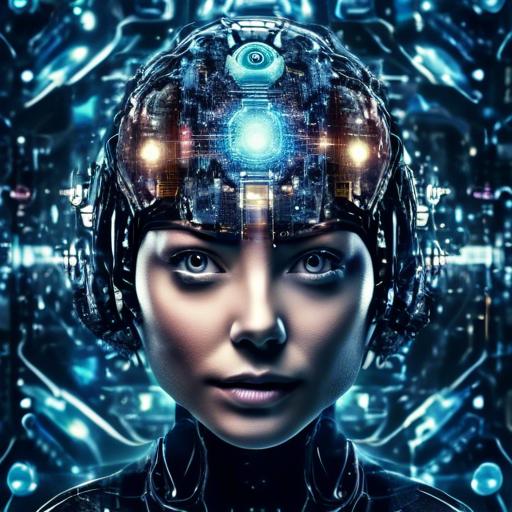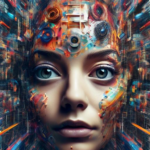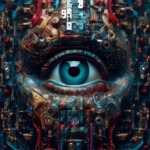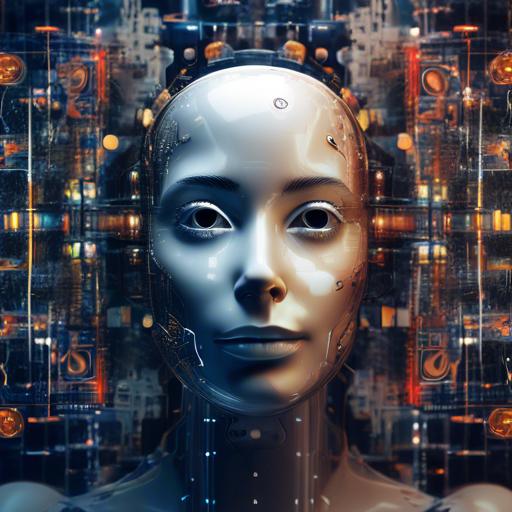In an era where technology continues to paint the canvas of our future, there’s a particular brush that has been making quite the splash—Artificial Intelligence. Imagine, if you will, entering an art gallery curated not by human hands, but by algorithms and datasets. Intriguing, isn’t it? The once complex and enigmatic realm of AI image creation has now started to open its doors to curious minds and budding creators alike. Welcome to the journey of demystifying this innovative landscape, where pixels meet potential, and creativity is only a click away. Whether you’re an artist seeking a new medium, a tech enthusiast eager to explore, or simply a beginner fascinated by the magic behind AI-generated visuals, this guide is your supportive companion in navigating this fascinating terrain. Grab your digital paintbrush; it’s time to unlock the secrets of AI image creation together!
Table of Contents
- Understanding the Basics: What is AI Image Creation?
- The Magic Behind the Pixels: How AI Algorithms Work
- Choosing the Right Tools: Popular AI Image Creation Software
- Step-by-Step Guide: Creating Your First AI-Generated Image
- Fine-Tuning the Details: Enhancing AI-Generated Art
- Ethical Considerations: Navigating Copyright and Creative Ownership
- Common Pitfalls: Troubleshooting Your AI Creations
- Real-World Applications: From Art to Advertising
- Future Trends: What’s Next in AI Image Creation
- Final Thoughts
Understanding the Basics: What is AI Image Creation?
AI image creation, at its core, involves utilizing artificial intelligence to generate images based on certain inputs and conditions. This incredible technology combines elements of deep learning, neural networks, and creative algorithms to produce visuals that are not just static but often highly detailed and dynamic.
There are a few fundamental components that power AI image creation:
- Neural Networks: These are essentially algorithms structured to mimic the human brain, helping machines process visual data intelligently.
- Deep Learning: A subset of machine learning, deep learning is critical for interpreting and understanding complex patterns within data, which is essential for generating realistic images.
- Generative Adversarial Networks (GANs): Comprising two neural networks competing against each other, GANs are particularly famous for producing high-quality, creative images.
The applications of AI in image creation are vast, ranging from art generation to deepfake technology, and even to augmenting medical imaging. For instance:
| Application | Description |
|---|---|
| Art Creation | AI generates unique pieces of artwork that can mimic various styles. |
| Deepfake | AI creates highly realistic images and videos, often for entertainment or commentary. |
| Medical Imaging | AI helps in interpreting scans and generating models for better diagnosis. |
Understanding these components and applications is key to grasping the potential and mechanics behind AI image creation. Whether you’re a curious beginner or a seasoned tech enthusiast, appreciating the elegance and complexity of this technology can open up new avenues for creativity and innovation.
Moreover, the ethical considerations surrounding AI image creation cannot be overlooked. While the technology offers groundbreaking possibilities, it also poses serious questions about privacy, copyright, and the potential misuse of AI-generated content. Staying informed and conscientious about these issues is crucial as you explore the fascinating world of AI-powered visuals.
The Magic Behind the Pixels: How AI Algorithms Work
At the heart of AI image creation lies intricate yet fascinating algorithms that transform raw data into visual wonders. Central to this magic are **neural networks**, which function somewhat like the human brain. These networks are composed of layers—each layer building upon the previous one to refine and enhance the image, almost like an artist adding finer details with every brushstroke.
There are several methodologies AI uses to create images:
- **Generative Adversarial Networks (GANs)**: Comprising two neural networks, a generator creating images, and a discriminator evaluating them.
- **Convolutional Neural Networks (CNNs)**: Exceptional at processing pixel data and extracting features from images.
- **Variational Autoencoders (VAEs)**: Specialize in generating images with a balance of quality and variety.
For those intrigued by how these technologies learn to generate images, imagine feeding the AI thousands of photos. The AI sorts through this ocean of data, recognizing patterns, colors, and shapes. Much like a child learning to draw by observing the world, the AI gets better with practice, refining its creations with each dataset it analyses.
To grasp the essence of AI image creation, let’s look at a simplified table distinguishing key methods:
| Method | How It Works | Best Used For |
|---|---|---|
| GANs | Competes between networks to produce high-quality images | Generating realistic images |
| CNNs | Processes image data in layers to analyze features | Image recognition and classification |
| VAEs | Encodes and decodes data to generate new images | Diverse image generation |
The interplay between vast datasets and sophisticated algorithms culminates in the creation of stunning AI-generated imagery. As these technologies evolve, so too does the potential for AI to redefine artistic expression, offering creators new tools and possibilities. Embrace the journey of learning and creating with AI, and you’ll find that the once obscure workings of these algorithms can become an exciting canvas for innovation.
Choosing the Right Tools: Popular AI Image Creation Software
When it comes to AI image creation, selecting the right software can significantly impact the quality of your work. With numerous options available, it can be daunting to determine which tool fits your needs best. Here’s a breakdown of some popular AI image creation software that you might find useful:
- DeepArt: Known for its ability to transform photos into artwork, DeepArt uses deep neural networks to replicate famous art styles. It’s perfect for those looking to add an artistic twist to their images.
- Runway ML: This versatile software offers real-time video and image processing. With its user-friendly interface, Runway ML is ideal for beginners who want to explore various AI capabilities without a steep learning curve.
- Artbreeder: Artbreeder stands out for its collaborative approach, allowing users to blend images to create unique artwork. It’s a fantastic tool if you love experimenting with different styles and genetics-inspired art creation.
| Software | Best Features | Ideal For |
|---|---|---|
| DeepArt | Art Style Replication | Art Enthusiasts |
| Runway ML | Real-Time Processing | Beginners |
| Artbreeder | Image Blending | Experimental Artists |
These tools each have their unique features and strengths, so it’s crucial to align your choice with your project goals. For instance, if you’re keen on creating stunning portraits with artistic flair, **DeepArt** might be your go-to. Conversely, if you need a comprehensive tool with various AI options, **Runway ML** can offer an all-in-one solution.
For those who thrive on creativity and collaboration, **Artbreeder**’s innovative platform can unleash countless possibilities. It’s not just about creating images, but about exploring and pushing the boundaries of what AI can do in art.
Step-by-Step Guide: Creating Your First AI-Generated Image
So, you’re ready to create your first AI-generated image? Exciting times! Let’s dive right in and walk through the essential steps to turn your imagination into a visual masterpiece.
**Choose Your Platform**: The first step is selecting an AI image generation platform that fits your needs. There are several options to choose from, each offering unique features and capabilities. Some popular platforms include:
- **DALL-E**: Known for its ability to generate highly detailed and imaginative images.
- **NightCafe**: User-friendly with various styles and customization options.
- **Artbreeder**: Ideal for collaborative projects and editing existing images.
You can find a brief comparison of these platforms below:
| Platform | Key Feature | Best For |
|---|---|---|
| DALL-E | High detail | Imaginative artwork |
| NightCafe | User-friendly | Beginners |
| Artbreeder | Collaboration | Editing images |
**Set Your Parameters**: Once you’ve chosen a platform, it’s time to set your parameters. Think about the artistic style you wish to emulate, the color palette, and any specific elements you want included. Inputting clear, concise descriptions helps the AI understand and reproduce your vision accurately.
For example, you might input: “Create a surreal landscape with bright colors and a futuristic city in the background.” The more detailed your instructions, the closer the final result will be to your expectations.
**Generate and Iterate**: After hitting the “Generate” button, the AI will create an initial image. Don’t settle for the first attempt if it’s not perfect. Most platforms allow you to refine and iterate on the generated images. Keep experimenting with different prompts and adjustments until you achieve the desired outcome.
**Save and Share**: Once you’re happy with your AI-generated image, save it to your device and share your creative success! Many platforms also offer community galleries where you can display your work, get feedback, and draw inspiration from others.
Fine-Tuning the Details: Enhancing AI-Generated Art
Bringing an AI-generated masterpiece closer to perfection requires an understanding of the subtle nuances that make art captivating. As you delve deeper into refining these creations, focus on the intricate details that set them apart. Key areas include:
- Color Balance: Ensure your image features harmonious hues by adjusting saturation and brightness levels. AI tools might generate overpowering colors, so tempering them with manual tweaking can produce a more aesthetically pleasing result.
- Texture Refinement: Pay attention to the surface textures and patterns within your art. Smooth out any rough edges or anomalies using graphic design software for a polished, realistic finish.
- Lighting and Shadows: Adjust lighting effects to add depth and dimension. This might involve fine-tuning highlights and shadows to create a more dynamic and engaging visual.
For those seeking a structured approach, here’s a quick comparison of popular tools that offer advanced image refinement features:
| Tool | Key Features |
|---|---|
| Adobe Photoshop | Advanced color correction, texture smoothing, intricate lighting adjustments |
| GIMP | Free powerful tools, great for texture refinement and color balance |
| Canva | User-friendly with basic lighting and color adjustment options |
To elevate your AI-generated art, consider integrating **layers** and **masks** in your editing workflow. These techniques provide greater control over individual elements within your image, allowing for more precise enhancements. Layers can help in blending different aspects seamlessly, while masks enable non-destructive editing.
Remember, the ultimate goal isn’t to overshadow the innate creativity of the AI but to enhance it. By fine-tuning these details, you’re collaborating with the algorithm to bring forth a more refined, visually arresting piece of art. Embrace the fusion of human artistry and technological innovation for a truly unique creation.
Ethical Considerations: Navigating Copyright and Creative Ownership
When creating AI-generated images, understanding **copyright and creative ownership** is paramount. As you navigate this process, it’s crucial to stay informed about the delicate balance between creative freedom and legal restrictions. Firstly, any imagery you create or use must respect the conditions set forth by original creators. Violating copyrights can result in legal repercussions and ethical dilemmas that undermine both your work and the original artists’ rights.
Consider these key points when dealing with AI-generated content:
- Source Authentication: Ensure that the images you are using as a base for AI transformations are either in the public domain or properly licensed.
- Attribution: Properly attribute the original creators if required. This demonstrates respect and professionalism in your work.
- Transparency: Be transparent about how your AI images are created. Are you using a particular dataset or AI tool? Acknowledge it responsibly.
In the AI space, sovereignty over creative outputs can be a gray area. Who owns the rights to an AI-generated image—the user who provided the input, the developer of the AI, or the entity that trained the AI model? Here’s a quick glance at how this can be approached:
| Stakeholder | Ownership Aspect |
|---|---|
| User | Concept and input data |
| Developer | AI tool/program used |
| Entity | Trained AI models |
**Fair Use** is another essential concept to grasp. While AI can remix and reimagine existing works, the extent to which this is permissible without infringing on copyrights depends heavily on the factor of **transformation**. Does your AI output result in significant new expression, meaning, or message? If yes, it could be argued to fall under fair use, but remember this is a complex legal territory best navigated with caution.
Lastly, **ethical AI usage** mandates that creators think beyond legalities. Reflect on the impact of your work: are you overshadowing or misrepresenting the original creators? Ethical AI imagers continually balance innovation with responsibility, ensuring that their creative pursuits contribute positively to the digital ecosystem.
Common Pitfalls: Troubleshooting Your AI Creations
Even seasoned AI enthusiasts face certain common challenges that can stymie the creative process. Navigating these pitfalls can be made easier with a bit of insight and proactive troubleshooting.
Inconsistent Output: Often, your AI-generated images might yield results that vary wildly between executions. This inconsistency can stem from multiple factors, such as variations in training data or model parameters. Here’s how you can address this:
- Ensure a diverse and comprehensive dataset to account for all variations.
- Regularly fine-tune your model based on feedback and new data.
- Review your parameter settings for any discrepancies that might not align with your objectives.
Blurry or Low-Resolution Images: A common frustration is ending up with AI images that lack sharpness or detail. This issue can often be traced back to your model’s capacity or the quality of your initial dataset.
- Use higher resolution images for training your model.
- Consider implementing image enhancement techniques post-generation.
- Evaluate if your model architecture requires upgrades to handle high-resolution tasks.
Biased Outputs: Bias in AI image creation can lead to skewed representations that reflect stereotypes or undue emphasis on certain traits. To mitigate this, consider the following:
- Audit your training data to ensure diversity and balance.
- Implement fairness constraints during the model training phase.
- Regularly evaluate the outputs to identify and address any biases.
| Problem | Potential Solution |
|---|---|
| Inconsistent Output | Refine dataset, adjust model parameters |
| Blurry Images | Use high-res data, enhance images, upgrade model |
| Bias in Output | Diverse dataset, fairness constraints, regular evaluation |
By addressing these issues head-on, you not only enhance the quality of your AI creations but also bolster your confidence in managing future projects. Troubleshooting might seem daunting at first, but with each challenge, you become more adept and resourceful.
Real-World Applications: From Art to Advertising
Imagine strolling through an art gallery and coming across a piece of art so captivating that it stops you in your tracks. You might be surprised to learn that this masterpiece was not crafted by a renowned human artist but generated by artificial intelligence. AI image creation is transforming the world of art, enabling artists and enthusiasts to explore limitless creative possibilities. From dynamic abstract paintings to lifelike portraits, AI is not only a tool but a collaborative partner, ready to push the boundaries of artistic expression.
But the magic of AI isn’t confined to art galleries. In the world of advertising, AI-generated images offer brands fresh and compelling ways to captivate audiences. **Marketers can now create personalized visuals** tailored to individual consumer preferences, making ad campaigns more engaging and effective. Here are some practical applications of AI in advertising:
- **Customizable Product Images:** Automatically generate hundreds of product images with varying styles and backgrounds.
- **Ad Campaign Optimization:** Use AI to generate images that are A/B tested to find the most effective visual content.
- **Brand Consistency:** Maintain consistent brand aesthetics across all marketing materials effortlessly.
**Graphic designers** are also reaping the benefits of AI-generated image tools. These tools can swiftly turn rough sketches into polished visuals, reducing the time spent on revisions and enabling greater focus on innovation. Additionally, AI aids in the rapid creation of design prototypes, allowing designers to experiment with different concepts before finalizing their work.
| Application | Benefits |
|---|---|
| Art Creation | Explores new styles and techniques |
| Advertising | Enhances audience engagement with personalized visuals |
| Graphic Design | Speeds up the prototyping process |
Ultimately, AI image creation is a versatile tool that touches many industries, from art to advertising. As you embark upon your journey to understand and utilize these technologies, remember that AI is here to enhance your creativity, open new avenues for expression, and streamline the visualization process. Whether you’re an artist, a marketer, or a designer, the possibilities are only as limited as your imagination.
Future Trends: What’s Next in AI Image Creation
The landscape of AI image creation is evolving at a dizzying pace, with new advancements promising even greater levels of creativity and efficiency. One of the most exciting trends on the horizon is the rise of **Generative Adversarial Networks (GANs)**. These networks involve two neural networks—the generator and the discriminator—that work against each other to improve the quality of generated images. Imagine GANs like an artistic duel where one artist creates new images while the other critiques them, leading to constantly improved artworks.
Another emerging trend is the increasing use of **hybrid models** that combine different AI techniques to create more realistic and diverse images. For instance, combining GANs with Convolutional Neural Networks (CNNs) enables the creation of highly detailed images with a deeper understanding of context. Additionally, these hybrid models facilitate more complex styling options, such as imitating famous art techniques or blending various artistic elements seamlessly.
Key Developments to Watch:
- **Enhanced Realism**: Future models will be capable of creating images indistinguishable from real photographs, down to the tiniest details like skin texture and reflections.
- **Interactivity and Customization**: Users could interact with AI tools in real-time, customizing aspects like lighting, color schemes, and even the mood of the image.
- **Ethical AI and Bias Mitigation**: As AI systems grow more powerful, significant strides will be made in reducing inherent biases, creating fairer and more inclusive algorithms.
Moreover, **virtual and augmented reality** (VR/AR) applications stand to gain significantly from advances in AI image creation. Imagine creating highly immersive environments with minimal effort, or customizing virtual spaces to an unprecedented degree. As AI improves, the capability to generate these virtual worlds will become faster, more efficient, and more accessible, enabling not just creators but everyday users to dive into digital artistry.
| Trend | Benefit |
|---|---|
| Enhanced Realism | Creates lifelike images almost indistinguishable from real photos |
| Hybrid Models | Combines strengths of multiple AI techniques for better results |
| VR/AR Integration | Enables easy creation of immersive environments |
The future of AI image creation is not just about generating beautiful and realistic images but also about making these technologies more accessible and user-friendly. With tools becoming more intuitive and powerful, even beginners will find themselves capable of producing professional-grade images with minimal effort. As we move forward, the possibilities for AI image creation are boundless, driven by continuous innovation and the aspiration to redefine the limits of creativity.
Final Thoughts
As you embark on your journey into the world of AI image creation, remember that it’s okay to start small and be patient with yourself. Embrace the challenge, unleash your creativity, and allow yourself to make mistakes along the way. With dedication, practice, and a willingness to learn, you’ll soon be able to create stunning images with the help of artificial intelligence. Remember, the possibilities are endless and the only limit is your imagination. So go ahead, dive in, and let your unique vision shine through in every pixel you create. Happy creating!
































